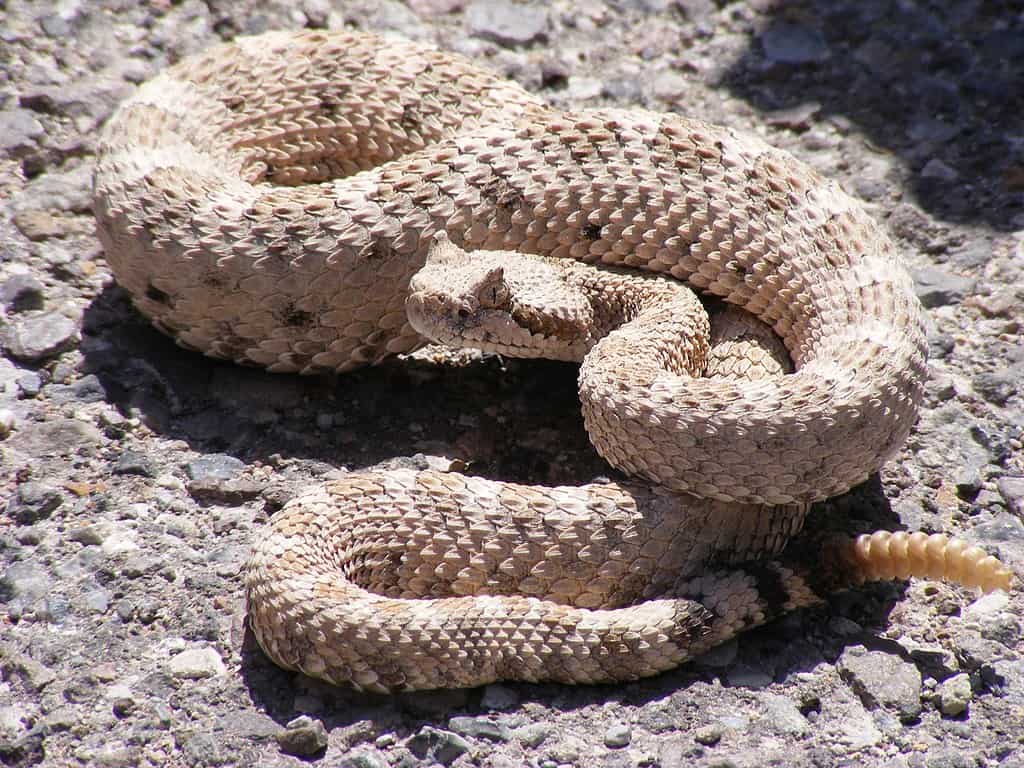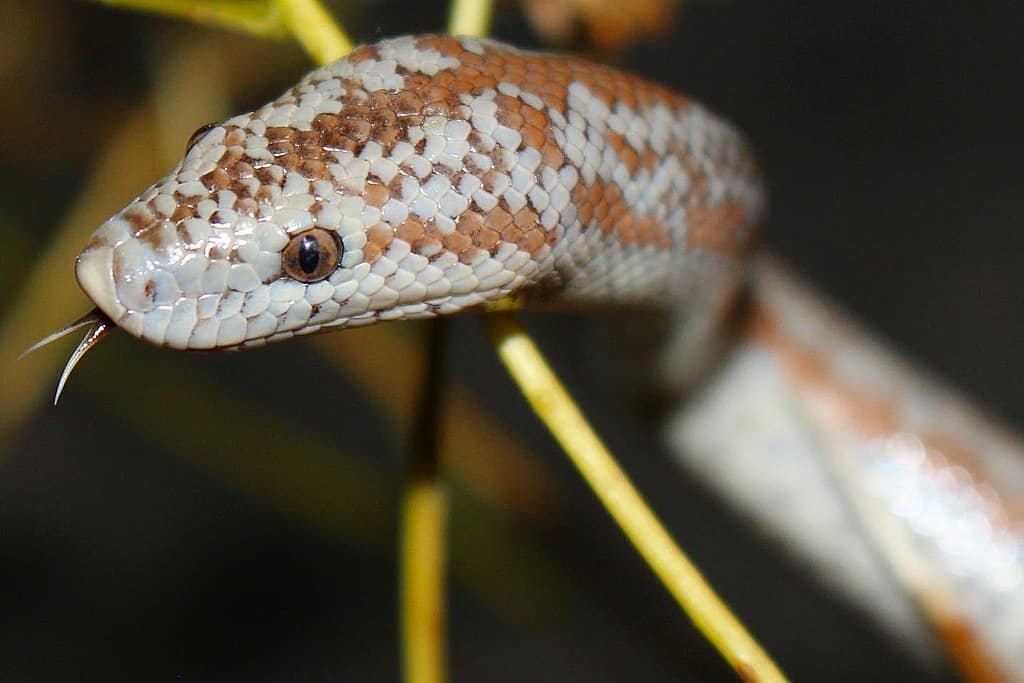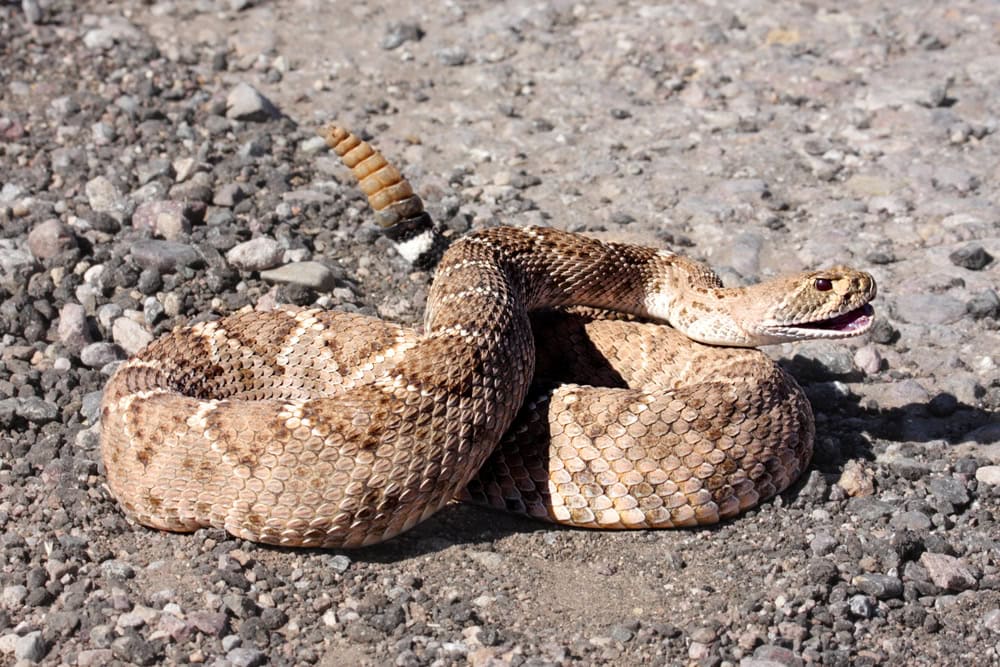Snakes are remarkable reptiles that have adapted to thrive in almost every environment on Earth, from lush rainforests to harsh, arid deserts. These adaptations showcase the incredible evolutionary journey these animals have undertaken to survive in their respective habitats. Desert-dwelling snakes have developed specialized mechanisms to conserve water, regulate body temperature, and hunt efficiently in environments where resources are scarce. In contrast, moisture-loving species have evolved to take advantage of humid conditions, often developing unique behaviors and physical characteristics that would be disadvantageous in arid regions.
Understanding how different snake species have adapted to their environments not only provides fascinating insights into evolutionary biology but also helps us appreciate the delicate balance of ecosystems. This article explores nine snake species that have mastered desert living and six that require moisture to survive, highlighting the remarkable adaptations that allow these reptiles to thrive in their preferred habitats.
Desert Adaptations How Snakes Survive Arid Conditions

Desert-dwelling snakes have evolved a suite of remarkable adaptations that enable them to survive in environments where water is scarce and temperatures can fluctuate dramatically. One of the most significant adaptations is their ability to conserve water. Unlike mammals, snakes don’t sweat, which helps them retain moisture. They also excrete uric acid instead of urea, allowing them to eliminate nitrogenous waste with minimal water loss. Many desert species have developed specialized scales that reduce water loss through their skin and help them move efficiently across loose sand.
Behavioral adaptations play a crucial role as well. Most desert snakes are nocturnal, hunting during cooler nighttime hours and seeking shelter during the day’s intense heat. They often burrow into the sand or hide under rocks to escape extreme temperatures. Some species can even slow their metabolism during drought periods, requiring less food and water to survive. These physiological and behavioral adaptations demonstrate nature’s ingenious solutions to the challenges of desert life.
The Sidewinder Master of Desert Movement

The Sidewinder (Crotalus cerastes) is perhaps one of the most iconic desert snakes, famous for its unique sideways locomotion that has given the species its name. This small rattlesnake, typically growing to about 2 feet in length, has perfected a specialized movement technique that minimizes contact with hot desert sand. The sidewinding motion involves the snake throwing its body in a J-shaped curve, touching the ground at only two points at a time, reducing heat exposure and allowing it to move efficiently across loose sand without sinking.
Native to the southwestern United States and northwestern Mexico, the Sidewinder has several additional adaptations for desert life. Its distinctive hornlike scales above the eyes serve as a built-in sunshade, protecting its vision from harsh sunlight and blowing sand. The snake’s light tan or cream coloration provides excellent camouflage against desert sands, while its triangular head houses heat-sensing pits that help it detect prey in the darkness of night. Despite the harsh conditions of its habitat, the Sidewinder has turned the desert’s challenges into advantages, becoming one of the most successful reptile predators in arid environments.
Saharan Horned Viper Built for Desert Extremes

The Saharan Horned Viper (Cerastes cerastes) is a remarkable snake that has evolved to thrive in one of the world’s most unforgiving environments: the Sahara Desert. Growing to about 1-2 feet in length, this venomous viper is instantly recognizable by the horn-like scales above each eye (though some individuals lack these horns). These protrusions may help protect the snake’s eyes from sand and possibly provide additional camouflage among the desert vegetation. Its sandy coloration with darker patterns helps it blend perfectly with its surroundings, making it nearly invisible when partially buried in sand.
This viper has mastered the art of desert hunting through a combination of ambush tactics and exceptional patience. It often buries itself in the sand with only its eyes and nostrils exposed, waiting for small mammals, birds, or lizards to pass by. When threatened, it can produce a distinctive rasping sound by rubbing its coils together as a warning. The Saharan Horned Viper can survive extreme temperature fluctuations, from scorching daytime heat exceeding 120°F to chilly desert nights, showcasing its extraordinary adaptations to one of Earth’s most extreme habitats.
Mojave Desert Sidewinder Heat-Resistant Specialist

The Mojave Desert Sidewinder (Crotalus scutulatus), a subspecies of the Mojave Rattlesnake, has developed specialized adaptations to survive in the intense heat of the Mojave Desert. This venomous pit viper grows to about 2-3 feet long and sports a light sandy or greenish coloration with darker diamond patterns that provide excellent camouflage in its rocky desert habitat. What makes this snake particularly fascinating is its ability to withstand extreme temperatures that would be lethal to many other reptiles. The Mojave Desert Sidewinder can function in temperatures exceeding 110°F, retreating to underground burrows when conditions become too extreme.
Unlike many rattlesnakes, the Mojave Desert Sidewinder possesses one of the most potent venoms in North America, containing both neurotoxic and hemotoxic components. This powerful venom allows it to quickly immobilize prey in an environment where hunting opportunities may be limited. The snake is primarily nocturnal, hunting in the cooler evening hours for small mammals, lizards, and other desert creatures. During the day, it often basks near the entrance of its burrow, ready to retreat at the first sign of danger or excessive heat, demonstrating its finely tuned adaptations to desert life.
Western Diamondback Rattlesnake Desert Survivor

The Western Diamondback Rattlesnake (Crotalus atrox) stands as one of the most recognizable and successful desert dwellers in North America. Growing up to 7 feet long, though typically averaging 3-5 feet, this formidable predator has mastered the art of desert survival. Its distinctive diamond pattern along its back, set against a background of brown, gray, or pinkish hues, provides exceptional camouflage in the varied terrain of its range, which spans from central Mexico through the southwestern United States. The snake’s most famous feature—its rattle—serves as a warning system that deters potential threats, allowing it to conserve energy by avoiding unnecessary confrontations.
As a desert specialist, the Western Diamondback has evolved several key adaptations. Its scales have a waxy coating that reduces water loss, while its efficient kidneys extract maximum moisture from bodily waste. During extreme heat, these rattlesnakes retreat to abandoned mammal burrows or rock crevices where temperatures remain more stable. They can also enter a state of brumation (similar to hibernation) during winter months, lowering their metabolic rate to conserve energy. The Western Diamondback’s exceptional heat tolerance, water conservation abilities, and highly efficient venom delivery system make it one of the most successful predators in arid environments, capable of surviving in areas where many other species cannot.
Desert Kingsnake The Reptile Hunter

The Desert Kingsnake (Lampropeltis splendida) is a non-venomous constrictor that has carved out a specialized niche in arid environments across the southwestern United States and northern Mexico. Growing to about 3-4 feet in length, this snake displays striking coloration patterns that vary from black and white bands to more complex patterns with yellows and browns, depending on the specific region. What makes the Desert Kingsnake particularly remarkable is its immunity to the venom of pit vipers, allowing it to prey on rattlesnakes and other venomous species that most predators avoid. This immunity gives the kingsnake a significant advantage in desert ecosystems where food resources may be limited.
As an adaptable desert dweller, the Desert Kingsnake is primarily nocturnal during hot summer months but may be active during daylight hours in spring and fall when temperatures are more moderate. It spends much of its time in rodent burrows, rock crevices, or under vegetation where moisture levels are higher and temperatures more stable. Unlike some desert specialists, the Desert Kingsnake maintains a relatively diverse diet, feeding on small mammals, birds, lizards, and other snakes, including rattlesnakes. Its ability to consume such a wide range of prey, combined with its resistance to dehydration and heat stress, has made it a successful and important predator in desert food webs.
Gila Monster Desert’s Venomous Lizard

While not a snake, the Gila Monster (Heloderma suspectum) deserves mention as one of North America’s most remarkable desert reptiles and one of only two venomous lizards in the world. Growing to about 1-2 feet in length, this stocky lizard is instantly recognizable by its black body covered with pink, orange, or yellow beadlike scales arranged in intricate patterns. Unlike most venomous reptiles that inject venom through hollow fangs, the Gila Monster has venom glands in its lower jaw and delivers toxins through grooved teeth while chewing on its prey. This slow-moving creature has adapted perfectly to life in the Sonoran, Mojave, and Chihuahuan deserts, where water is scarce and temperatures fluctuate dramatically.
The Gila Monster’s desert adaptations are remarkable. It can store fat in its tail and body, allowing it to go months between meals. During the hottest and driest parts of the year, it spends up to 95% of its time in underground burrows, emerging primarily after rainfall. It efficiently harvests water by absorbing moisture through its cloaca when sitting in temporary rain puddles. Unlike most reptiles that lay eggs, the Gila Monster gives birth to live young, an adaptation that protects developing offspring from the harsh desert environment. Despite its venomous nature, the Gila Monster rarely bites humans unless provoked, preferring to avoid confrontation and conserve energy in its challenging desert habitat.
Rosy Boa California’s Desert Dweller

The Rosy Boa (Lichanura trivirgata) is a small, non-venomous snake that has adapted beautifully to life in the deserts of southwestern United States and northwestern Mexico. Typically growing to 2-3 feet in length, this snake earned its name from the rosy or salmon-colored hue often present on its belly, though its overall coloration varies widely from region to region. Most specimens display three longitudinal stripes running the length of their bodies, which provide excellent camouflage among the rocks and soil of their desert habitat. Unlike many desert snakes that are primarily nocturnal, the Rosy Boa is crepuscular, being most active during dawn and dusk when temperatures are moderate.
What makes the Rosy Boa particularly well-adapted to desert life is its remarkable water conservation abilities. It has evolved to extract maximum moisture from its prey, rarely needing to drink free-standing water. When threatened, rather than fleeing (which would expend valuable energy), the Rosy Boa typically coils into a ball, hiding its head within its coils and emitting a musky odor from glands near its cloaca. This defensive strategy conserves energy and water that would otherwise be lost through rapid movement. Despite the harsh conditions of its habitat, the Rosy Boa can live up to 25 years in the wild, testament to its successful desert adaptations and efficient lifestyle.
Sonoran Gopher Snake Desert’s Ground Hunter

The Sonoran Gopher Snake (Pituophis catenifer affinis), a subspecies of the widespread Gopher Snake, has evolved specific adaptations for life in the Sonoran Desert and surrounding arid regions. Growing to an impressive 3-7 feet in length, this non-venomous constrictor displays a light brown or yellowish base color with large, dark brown or black blotches, providing excellent camouflage in the varied terrain of desert environments. Unlike many desert specialists that are strictly nocturnal, the Sonoran Gopher Snake exhibits remarkable flexibility in its activity patterns, hunting during cooler daylight hours in spring and fall while shifting to more crepuscular or nocturnal habits during the intense summer heat.
As a desert-adapted species, the Sonoran Gopher Snake possesses several key survival strategies. Its scales have a waxy coating that reduces water loss through the skin, while its efficient kidneys minimize water elimination through waste. When threatened, this snake employs an impressive defensive display—flattening its head, hissing loudly, and vibrating its tail rapidly against dry vegetation to mimic a rattlesnake. This mimicry often deters potential predators without requiring the snake to waste energy in escape. The Sonoran Gopher Snake plays a crucial ecological role in desert ecosystems, controlling rodent populations that might otherwise damage native plant communities, showcasing how a non-venomous snake has become an essential component of desert biodiversity.
Desert Night Snake Nocturnal Specialist

The Desert Night Snake (Hypsiglena chlorophaea) is a small, secretive serpent perfectly adapted for nocturnal life in arid environments across the western United States and northern Mexico. Rarely exceeding 2 feet in length, this slender snake sports a light gray or tan body with darker brown blotches, providing excellent camouflage among the rocks and soil of its desert habitat. What makes the Desert Night Snake particularly interesting is its specialized head, featuring slightly enlarged rear fangs and mild venom used to subdue its primary prey—small lizards and their eggs. Although technically venomous, it poses no threat to humans due to its small size, rear-positioned fangs, and mild toxin primarily effective against cold-blooded prey.
As a desert specialist, the Desert Night Snake has evolved to be almost exclusively nocturnal, emerging from rocky hideaways after sunset when temperatures drop and humidity rises slightly. This behavioral adaptation allows it to avoid the extreme heat of desert days while taking advantage of the increased activity of nocturnal prey. During daylight hours, it retreats beneath rocks, into crevices, or under plant debris where conditions remain cooler and moisture levels higher. The Desert Night Snake’s ability to detect prey using both vision and chemical cues allows it to hunt efficiently in the darkness, while its small size enables it to access tight spaces where prey may hide, making it a successful predator despite the challenging conditions of its arid habitat.
Water-Loving Cottonmouth: Swamp Specialist

The Cottonmouth (Agkistrodon piscivorus), also known as the Water Moccasin, represents a stark contrast to desert-dwelling snakes, having evolved to thrive in humid, water-rich environments across the southeastern United States. Growing to an average length of 2-4 feet, this heavy-bodied pit viper is instantly recognizable by its distinctive defensive display—opening its mouth wide to reveal the startlingly white interior that gives the species its name. Cottonmouths typically display a dark brown to black coloration with variable crossbands that may fade as the snake ages, providing excellent camouflage in the murky waters and shadowy vegetation of their wetland habitats.
Unlike desert snakes that conserve water at all costs, the Cottonmouth has adapted to an abundance of moisture. It is a strong swimmer, often floating with its head held above water and body barely submerged. This semi-aquatic lifestyle allows it to hunt both in water and on land, preying on fish, amphibians, small mammals, birds, and even other snakes. Cottonmouths are unable to survive in arid conditions due to their high water requirements and lack of specialized water conservation mechanisms. Their skin is more permeable than that of desert species, allowing for greater respiratory gas exchange in humid environments but resulting in rapid dehydration in dry conditions. The Cottonmouth’s biology demonstrates nature’s specialized adaptations for life in moisture-rich ecosystems.
Conclusion:

Snakes are masters of adaptation, thriving in nearly every environment on Earth—from scorching deserts to humid, moisture-rich habitats. The nine desert-dwelling species we explored show how snakes have evolved specialized behaviors, physiology, and coloration to survive intense heat, scarce water, and arid terrain. Meanwhile, the six moisture-loving species remind us of how crucial humidity and water sources are for many snakes’ survival, influencing everything from their skin health to hunting strategies.
Understanding these differences highlights the incredible diversity and resilience of snakes as a group. Whether they flourish in dry sand dunes or lush, wet forests, snakes continue to play vital ecological roles across the planet. By appreciating their unique adaptations, we can better protect their habitats and ensure that these remarkable reptiles endure for generations to come.
- 12 Most Frequently Adopted Dog Breeds in America - August 21, 2025
- 10 Animals That Can Survive Being Cut in Half - August 21, 2025
- 10 Animals That Can Outsmart Humans in Surprising Ways - August 21, 2025

